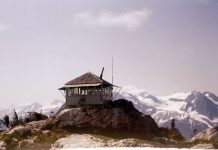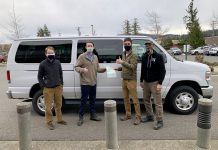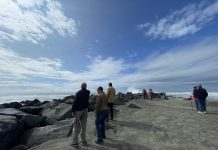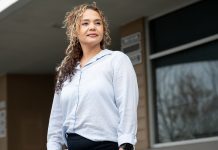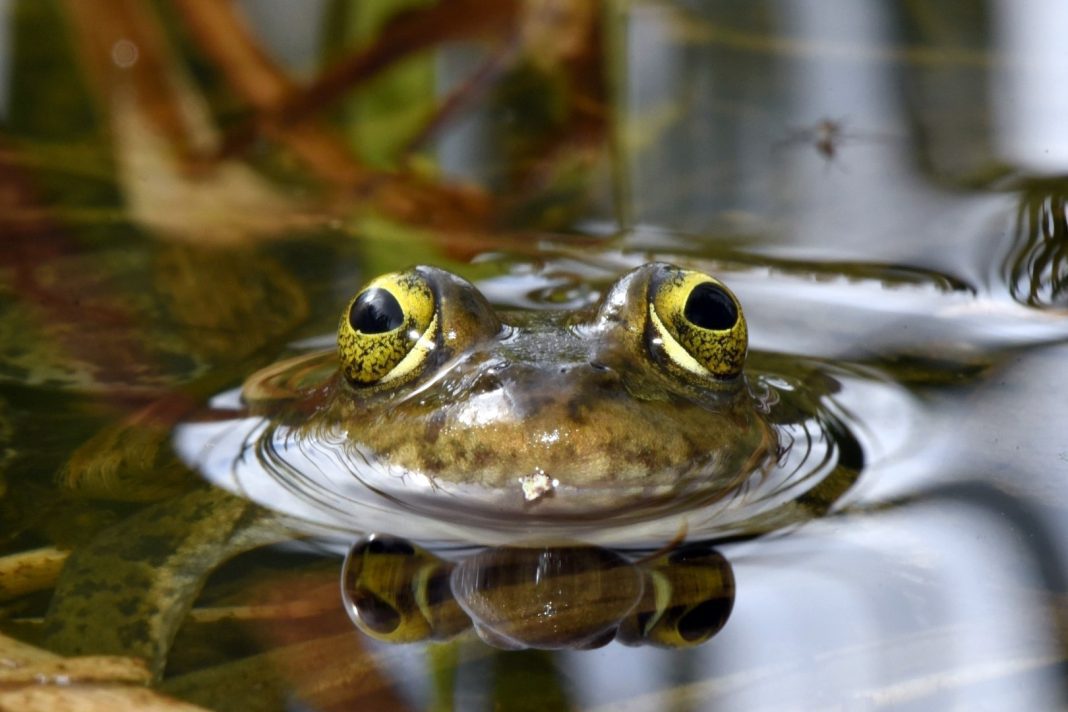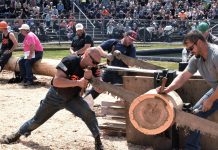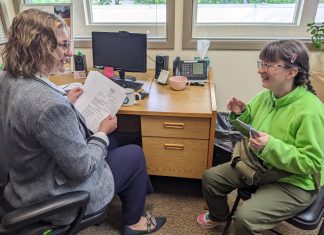Now endemic only to parts of Washington and Oregon, it is estimated that the Oregon spotted frog (OSF) has been lost from more than 78% of its original range. Listed as Threatened under the Endangered Species Act in 2014, its decline has been linked to the presence of the invasive bullfrog and reed canary grass, as well as loss and degradation of breeding habitat due to human impacts.
Whatcom County is home to some of the few remaining populations in Washington state and local scientists have been working hard for almost a decade to help this delicate species not only survive but hopefully thrive and recover despite a shifting climate and continuing development pressures.
Community partnerships may be the key to their recovery. Local scientists are partnering with local, regional and state agencies, citizen scientists, private landowners, and nonprofits like Whatcom Land Trust to monitor OSF populations and conduct studies that will determine how best to approach their restoration and recovery.
Efforts Hampered by Private Land Ownership
“For a long time, the only known populations surviving in Washington were in Thurston and Klickitat County,” says lead amphibian scientist Dr. Stephen Nyman of the Whatcom County Amphibian Monitoring Program (WCAMP).
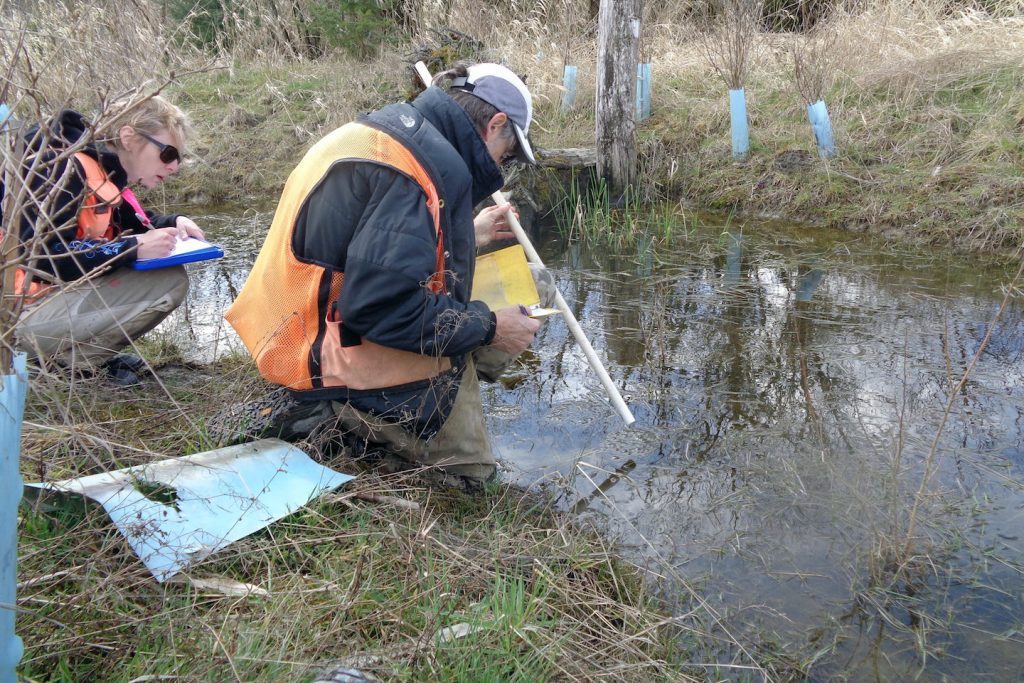
According to Nyman, the species was first found in Whatcom County in 2011—before the species was listed. “From 2011 through 2013 the WDFW [Washington Department of Fish and Wildlife] and the U.S. Fish and Wildlife Service joined together and did a bunch of surveys. Some landowners got spooked when they heard it was going to get listed, and we haven’t had access because the landowners thought it would be a terrible thing if they had this listed species on their property,” Nyman says. “Even though the WDFW and Fish and Wildlife aren’t going to tell them what to do on their property—they can’t, really—people have this attitude that, ‘It’s my land and I can do what I want and I don’t want you here,’ even if there are frogs here. It’s a hugely frustrating thing.”
COVID has also made it extra difficult in the past two years for scientists and volunteers to go door to door or do group surveys.
Since 2012, new populations have been discovered in the tributaries of the South Fork Nooksack.
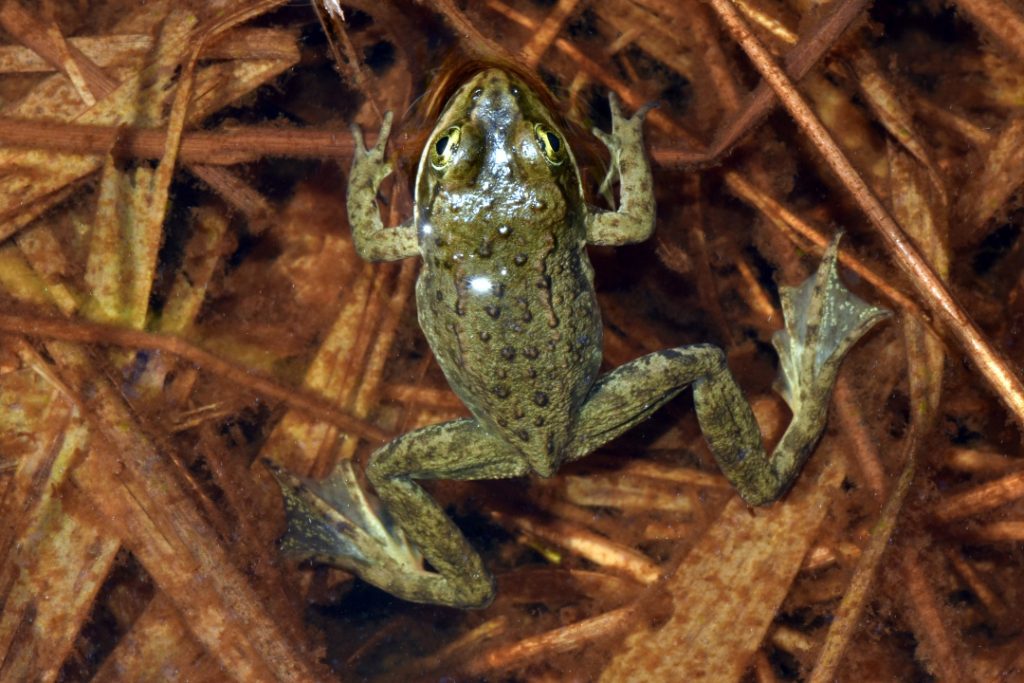
“Originally they were found on one tributary called Black Slough, which was recently obtained by Whatcom Land Trust,” says Nyman. “Eventually they were found on multiple tributaries including another Land Trust property—Catalyst Preserve. Two years ago, we found them on another Land Trust property upstream of Catalyst.” The 236-acre Catalyst Preserve contains several tributaries of the South Fork.
Whatcom Land Trust recently worked with landowners to facilitate Whatcom County’s purchase of the Black Slough property. “The Trust, Whatcom County, South Fork residents, the Nooksack Indian Tribe, and others are partnering on a long-term vision to restore the Black Slough and surrounding wetlands to support a variety of wildlife—including the OSF—that once thrived in this part of the valley,” says Whatcom Land Trust Conservation Manager Alex Jeffers.
Local Scientists Lead the Way
Wetland ecologist and WCAMP’s Program Manager Vikki Jackson established the all-volunteer organization in 2011, before OSF was even on their radar. Nyman got involved a couple years later. Nyman has thus far been successful in earning three small grants for Oregon spotted frog monitoring and restoration—the first for $26,000, a second for $25,000 and a third for $35,000. Jackson and Nyman were also recognized for their efforts in 2020 among the U.S. Fish and Wildlife’s Threatened and Endangered Species Recovery Champions.
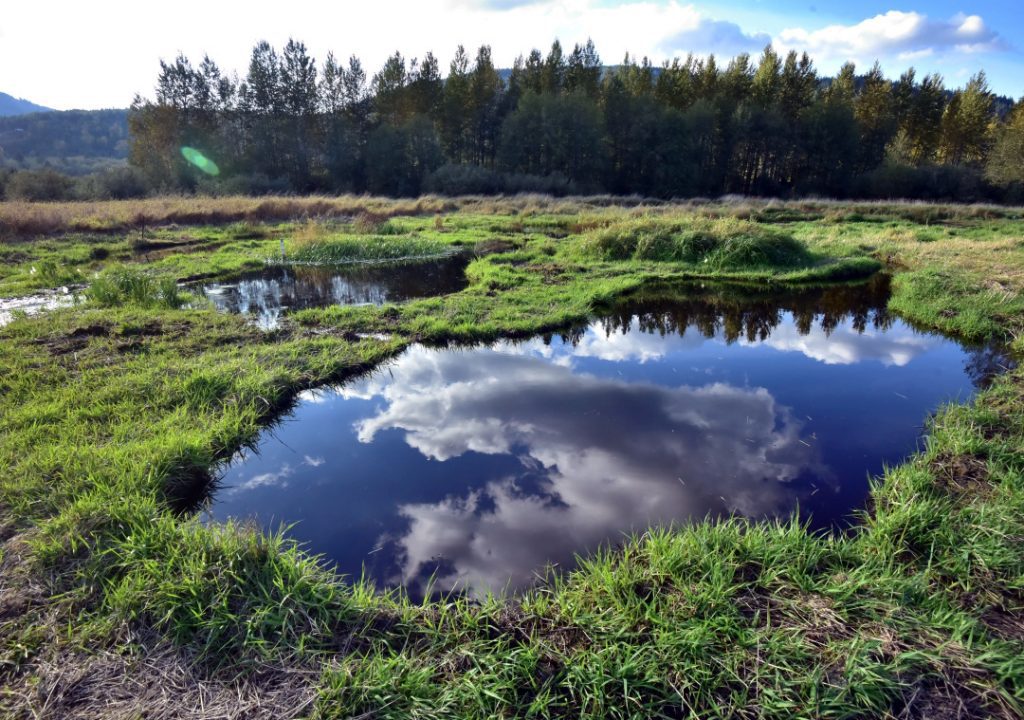
“Oregon spotted frog need openings in emerging herbaceous wetland vegetation for their breeding sites,” Nyman says. “Because we have invasive reed canary grass at all of our sites that grows to be about seven feet tall, we don’t have any openings at all and we basically have no breeding habitat, just unmanaged reed canary grass, including at the Samish River Preserve.” Whatcom Land Trust purchased 65 acres in the headwaters of the Samish River near Wickersham in 2008 that eventually became Samish River Preserve.
WCAMP’s most recent grants have focused on developing methods to re-establish native plants that can outcompete the invasive reed canary grass.
Another Challenge: Invasive Bullfrogs
The American bullfrog (Lithobates catesbeianus), the largest of all North American frogs, can grow to a length of eight inches or more and weigh up to 1.5 pounds. That’s vastly bigger than the OSF, measuring about two to four inches and weighing in at under 0.2 pounds.
“Bullfrogs are not native to our area. They’re an Eastern North American species but they’ve been introduced everywhere, including here in Whatcom County,” says Nyman. “The problem is that they will eat whatever they can fit in their mouth. Bullfrogs are also highly aquatic, just like the Oregon spotted frog. So OSFs are getting eaten but they’re also competing for the same habitat and resources.”
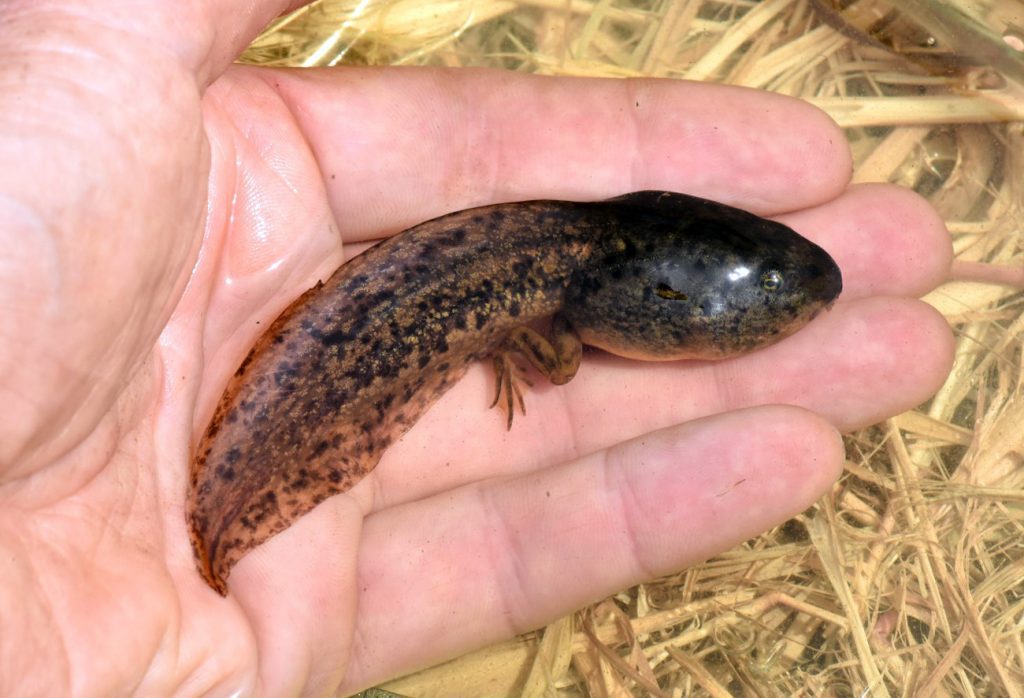
Although results are preliminary, it appears that bullfrogs could pose a significant threat to the OSF’s survival. “Unfortunately,” Nyman says, “we found one place where there are bullfrogs very close to where there are Oregon spotted frogs, just upstream and downstream on the Samish River, so that’s a disturbing finding.”
Private land ownership limitations also mean that efforts to eradicate or control bullfrog populations in Whatcom County and throughout the OSF’s range would be monumentally difficult and expensive.
Responding to and Planning for Climate Change and an Uncertain Future
“What you really ideally want for Oregon spotted frog is aquatic habitat that goes from relatively deep—which could be three or four feet—to really shallow where the frogs breed so that as it begins to dry, the tadpoles still have habitat and in the dry season there is still water around,” says Nyman. “But with climate change, that is going to be tougher and tougher. If we didn’t do anything, I think a lot of sites just aren’t going to have that persistent water habitat at all that tadpoles need to metamorphose.”
Habitats dependent on rainfall could be the most impacted by the drier summers of a shifting climate. According to Nyman, there’s also evidence that climate change is causing OSF to breed earlier and earlier each year in the southern part of their range in Oregon. “When they breed earlier like that, there’s more chance you could have a frost that will kill the eggs when they’re in their most vulnerable stage.”
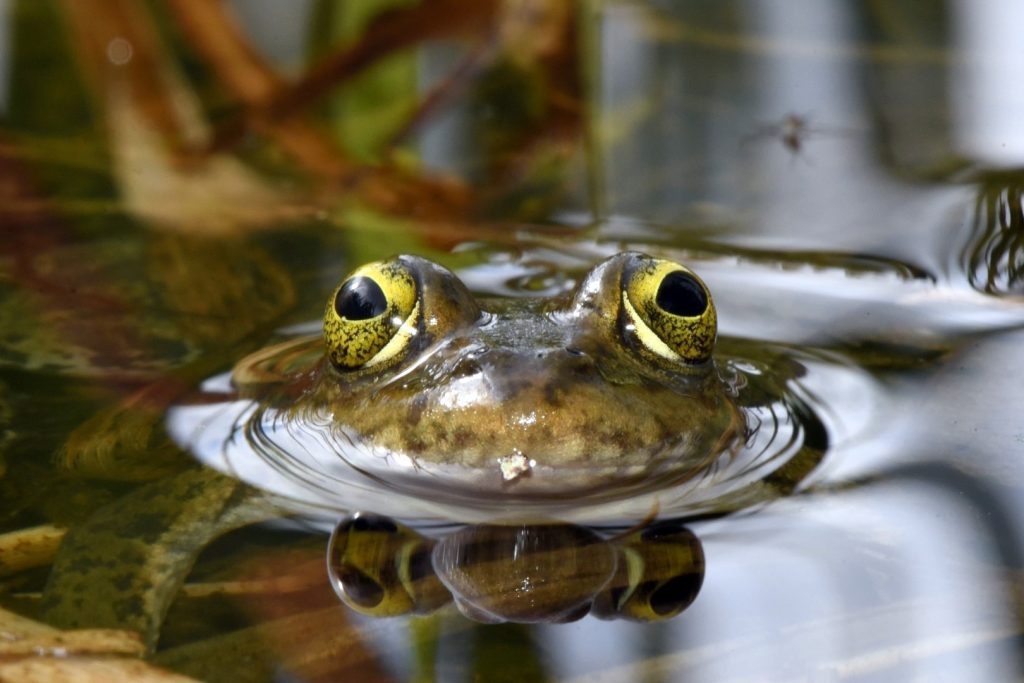
This year, Nyman and his team intend to apply for a much larger grant that would focus on ensuring that other parts of the Samish River Preserve get the water that the OSF so dearly need to survive. They’ll also look at the potential effects of the drought and flooding of 2021.
“This work is heavily dependent on volunteers,” Nyman says. “More than 55% of the work time is donated, including a lot of my own. Most of the funds go toward materials and equipment like native plants and a brush cutter.”
Those interested in volunteering with the WCAMP team of citizen scientists can email Nyman to be added to an interest list at Stephen@whatfrogs.org or check the website (https://whatfrogs.wordpress.com), Facebook or Instagram for updates. Training will occur in late February or early March.
“In 2022, our partners will be doing a range-wide survey of the species in Washington and Oregon to get as many surveys as possible to get a better idea of the status in its range,” says Nyman. “We’ll survey egg masses in the early spring, tadpoles later in the spring, and then frogs in July, August, and September as things dry out. It’s a labor-intensive effort. But if we have five or ten volunteers it goes a lot faster.”






